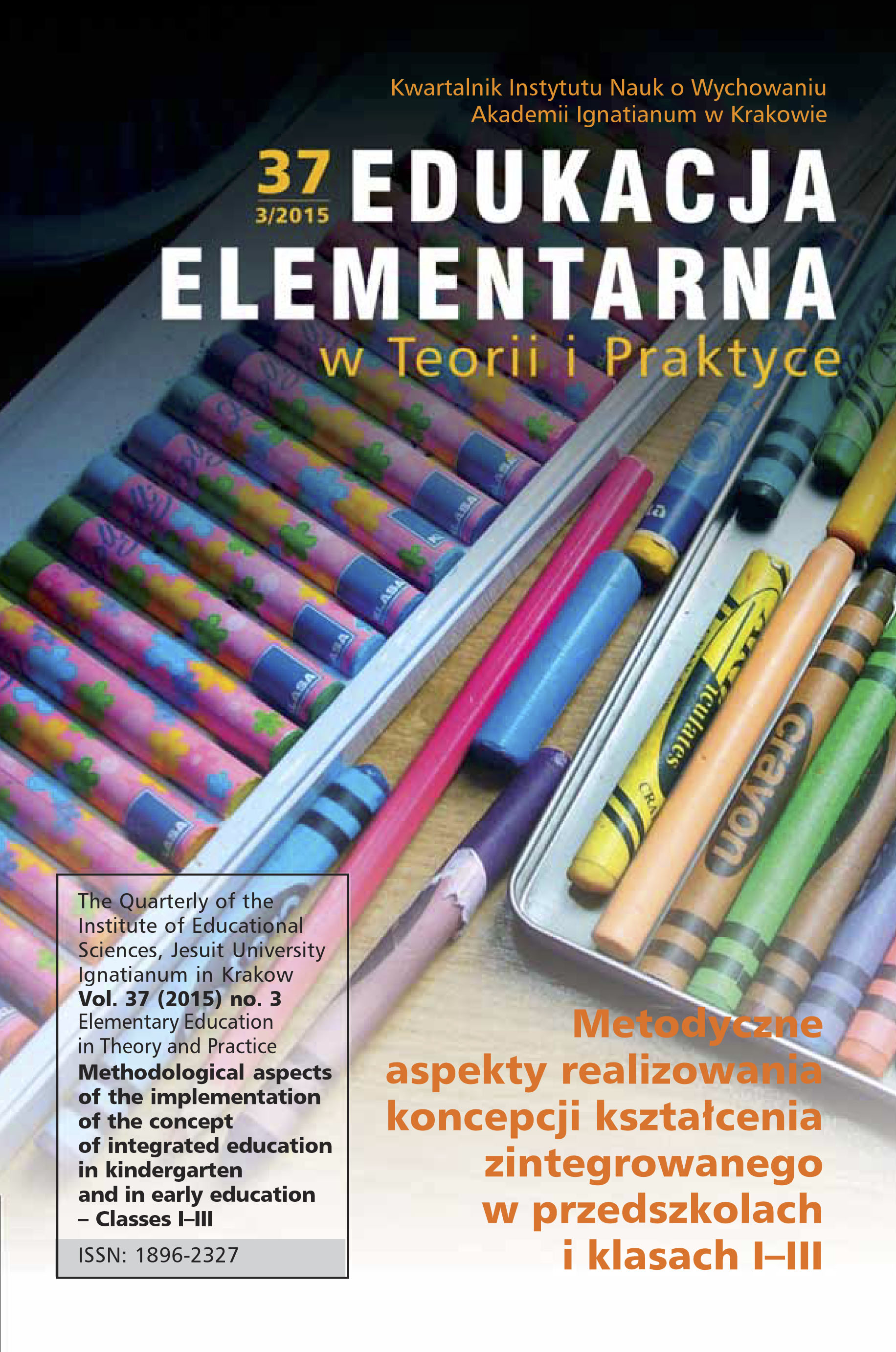Zajęcia plastyczne w klasach I–III oparte na metodzie praktycznej działalności uczniów
Arts and Crafts Classes in Years I–III, Based on Methods Featuring Pupils’ Practical Activities
Author(s): Ewa PiwowarskaSubject(s): Social Sciences, Education
Published by: Uniwersytet Ignatianum w Krakowie
Keywords: teacher; child; activity; planning; art education;
Summary/Abstract: The issue to be analysed here concerns teachers’ planning of arts and crafts classes in Years I–III, with specific reference to methods featuring pupils’ practical activities. A theoretical part briefly presents the concepts involved in teaching a subject that was initially defined as drawing, then as arts and crafts education, and finally as arts and crafts classes. It points out the factors that influence the process of stimulating pupils’ artistic activities. The technique used in the course of this study, as determined by the scope and methods of the survey, was a questionnaire directed at teachers. Its aim was to answer the question that had been formulated as the main research problem: What is the process of artistic activity like in contemporary schools at early-school level, when based on methods featuringpupils’ practical activities? Recommendations set down in writing by teachers allowed some answers to be formulated that were relevant to the principal research problem here: the frequency of arts and crafts classes conducted by teachers, the types of class and their subject matter, the popularity of arts and crafts techniques, and the problems noticed by respondents examined while preparing classes using some of those same techniques. Analysis of the findings of the study enables us to then state that pupils, in the context of engaging in arts and crafts activities in school: most frequently create their drawings on the basis of memorized facts and illustrative material, and least frequently create so called after-observation drawings or works based on direct observation of objects; most frequently realize contents that refer to real events, often inspired by literary texts or by music, but rarely create works that concern unreal/ fantasy matters and most rarely pursue stilllife painting as their field of artistic activity: most frequently perform artistic tasks based on drawing and painting techniques, and very rarely use three-dimensional and graphic techniques. It can be concluded that teachers see a need to organize art studios in specialist schools, such as would enable various creative tasks to be performed. It would also be worth increasing and expanding classes aimed at developing pupils’ sense of space, as this is highly important for the perception of three-dimensional forms. There is also a call to limit classes where children use ready-made patterns, and to replace these with activities that stimulate their imaginations and encourage them to invent their own solutions.
Journal: Edukacja Elementarna w Teorii i Praktyce
- Issue Year: 10/2015
- Issue No: 3 (37)
- Page Range: 115-128
- Page Count: 14
- Language: Polish

